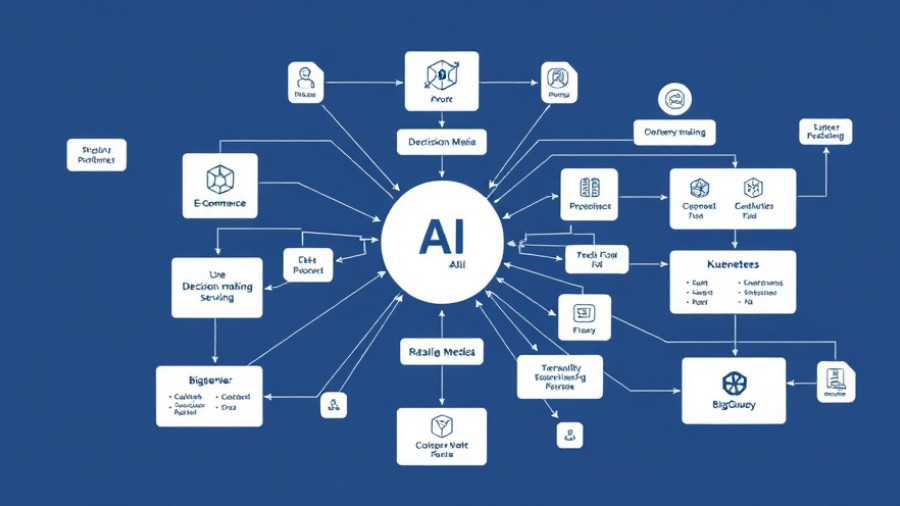
Understanding AI in Retail Media
The integration of artificial intelligence (AI) into retail media is transforming how brands connect with consumers. The recent collaboration between Moloco, an AI-native retail media platform, and Google Cloud is noteworthy, as it leverages AI vector search to enhance the personalization of marketing efforts. This innovative approach counters the limitations of traditional advertising frameworks and aims to drive meaningful engagement through sophisticated data analysis.
The Challenge of Legacy Systems
Many retailers today are caught in a complicated web of legacy advertising technologies that inhibit their hiring potential. Even with valuable first-party data at their disposal, these retailers often find themselves unable to translate this data into actionable insights. According to the Dentsu Global Ad Spend Forecast, the retail media sector is expected to grow significantly, yet many brands struggle to remain competitive against giants like Amazon and Walmart, which have already integrated advanced AI capabilities into their advertising strategies.
The Power of AI Vector Search
The heart of Moloco’s offering lies in its AI vector search, a technology that moves away from basic keyword matching to utilize semantic understanding. As highlighted by experts at Google Cloud, this shift allows retailers to create more relevant and personalized ad experiences. Instead of relying solely on word associations, AI vector search translates product information and consumer behavior into mathematical representations known as vectors, which can then be used to uncover deeper insights and connections. For instance, when a customer searches for a "running shirt," the algorithm understands the context and can also suggest related products like shoes or fitness trackers.
Measurable Business Impact
The outcomes from employing AI vector search within Moloco’s framework have proven compelling. Retailers are experiencing increased advertising capacity, reduced latency in ad serving, and revenue uplift, with some participants seeing up to 10 times the capacity improvements and a notable decrease in latency by approximately 25%. Such advancements foster a more efficient advertising ecosystem, improving click-through rates and driving conversion efficiencies.
Implications for Retailers
For chief revenue officers (CROs) and chief marketing officers (CMOs), using sophisticated AI-driven tools like those from Moloco translates into distinctive advantages. They glean industry-leading performance metrics indicative of a more profitable advertising strategy. With real-time data processing capabilities, this technology enables retailers to capitalize on their first-party data quickly and efficiently—an increasingly crucial differentiator as competition heats up.
Future Trends and Considerations
Moving forward, retailers need to embrace data intelligently. As third-party cookies fade out, reliance on first-party data will be paramount. The integration of generative AI and AI-driven recommendations can saturate the market, creating an expectation for brands to deliver truly personalized experiences. Retailers equipped with cutting-edge AI solutions can adapt quickly to evolving consumer preferences and behaviors—making it essential for them to consider investing in such technologies to avoid obsolescence in a rapidly changing landscape.
Action Steps for Retailers
Retailers aiming to stay ahead should evaluate their current advertising infrastructures and consider shifting to AI-native platforms. Collaborations similar to those between Moloco and Google provide a clear path forward, enabling establishments to harness the power of AI without the hefty investment traditionally associated with such a transition. As the future unfolds, understanding and adapting to these technologies will be non-negotiable for continued success in retail.
 Add Row
Add Row  Add
Add 




Write A Comment